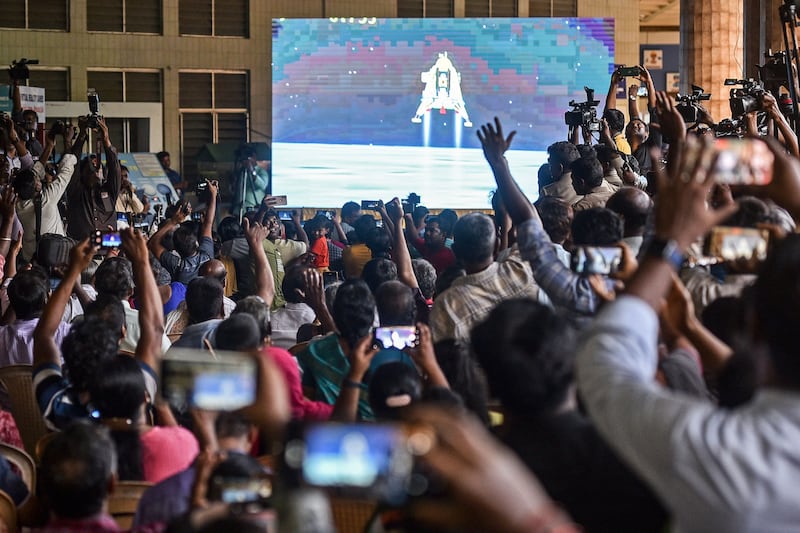India has landed an uncrewed probe near the moon’s unexplored south pole, a milestone in the country’s efforts to become an international power in space exploration.
Wednesday’s successful controlled landing of the $75 million (€69 million) Chandrayaan-3 mission made India only the fourth country to land a craft on the moon, after the United States, China and Soviet Union, and the first to reach its south pole.
The high-profile mission came days after a Russian attempt to land at the south pole, Moscow’s first lunar mission since 1976, ended in failure. The uncrewed Luna-25 spacecraft spun out of control and crashed into the surface on Sunday.
Moscow and New Delhi had been racing to become the first to explore the moon’s south pole. Scientists have said the region is of particular interest because it could contain water, which would make it crucial to any ambitions to inhabit the moon.
READ MORE
Wednesday’s mission was India’s second attempt after scientists lost contact with the Chandrayaan-2 probe upon descent in 2019. A rover carried by the Indian lander is due to conduct a series of experiments on the moon’s surface.
The landing represented not just a scientific achievement but a geopolitical boost for prime minister Narendra Modi, who has sought to portray India – now the world’s most populous country – as a rising superpower in advance of national elections next year.
“This is the dawn of the new India,” Mr Modi said after the landing, in a broadcast from South Africa, where he is attending the annual Brics summit.
He described it as a historic moment for humanity, adding: “All countries in the world, including those from the global south, are capable of achieving such feats.”
The Indian Space Research Organisation (ISRO), founded in 1969, has fostered a reputation for running a low-cost but effective programme that has helped build out the country’s meteorological and telecommunications capabilities and delivered useful developmental tools. India is also home to a fast-growing private space sector that has drawn eager investment.

The landing was “a major milestone from our point of view”, said Nambi Narayanan, a former scientist with the ISRO. “If it has brought [benefits] to the United States or Russia or China, it’s going to bring them to us also.”
The country’s extraterrestrial ventures have acquired renewed urgency in recent years as China has rapidly developed its own space programme.
In 2019, China became the first country to land on the far side of the moon and this year sent a civilian into orbit. It is preparing for a manned lunar mission by 2030.
Relations between the countries have deteriorated sharply since deadly clashes in 2020 along their shared Himalayan border, and Indian analysts have highlighted the importance of space as a future military arena.
The landing would be a boon for India’s space ambitions, Narayanan said. “We have learned from others and we have our own intelligence in making things work for us.” – Copyright The Financial Times Limited 2023











